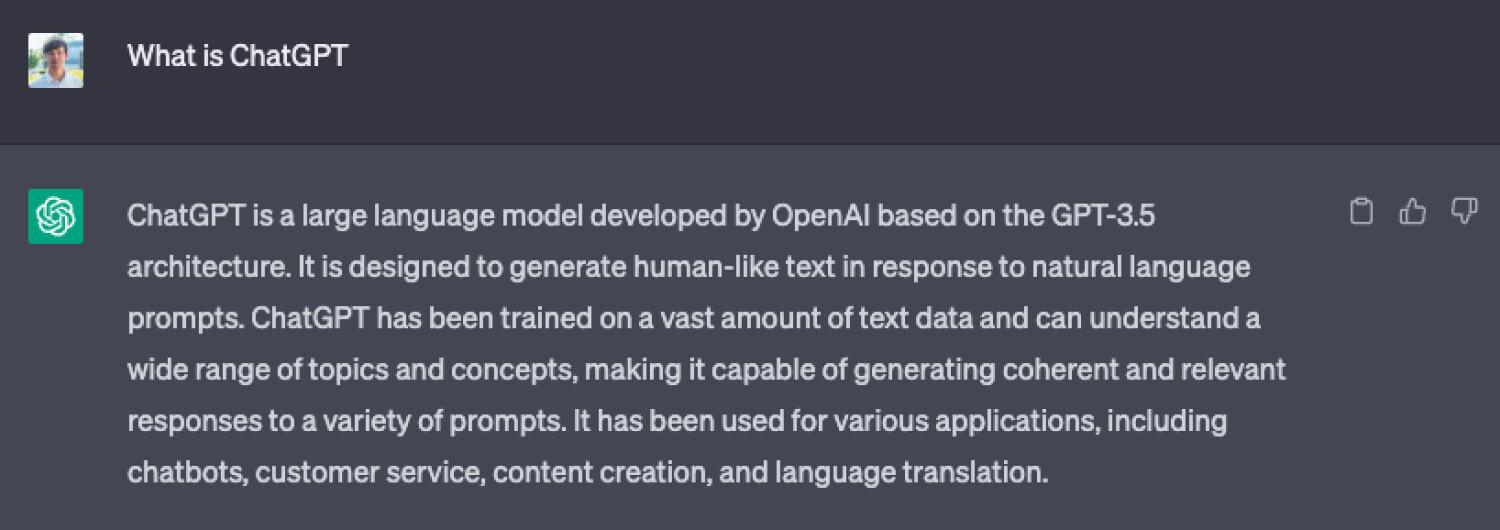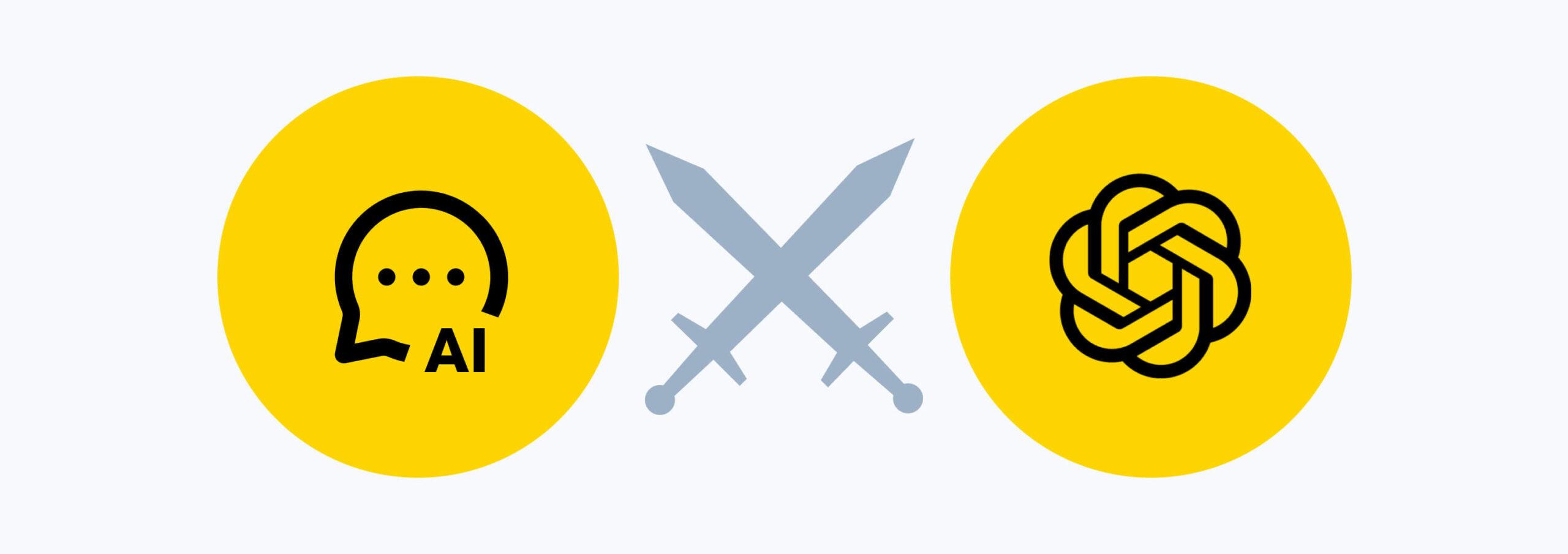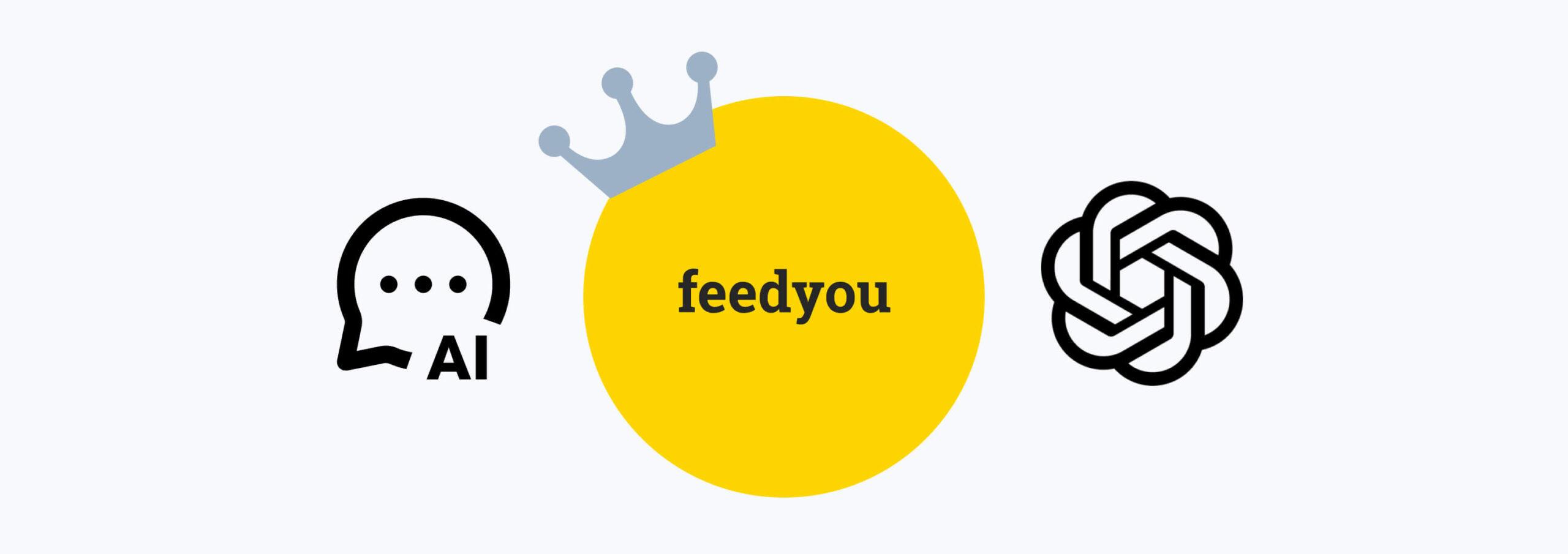Recently, ChatGPT has been generating a lot of buzz in the news, leading people (especially our customers) to wonder about its impact on Conversational AI. The short answer is ChatGPT will not replace Conversational AI, particularly for customer service and contact center use cases. As a standalone tool, ChatGPT lacks the essential features necessary for enterprise-level solutions and above all, is not even designed for them. This doesn’t diminish ChatGPT’s capabilities or the advancements it represents in AI technology. Nevertheless, there is a lot of confusion surrounding its capabilities, limitations, and intended use. Let’s explore this topic in greater detail.
What is ChatGPT?

What is Conversational AI?
Conversational AI is a conversational interface used for interacting with users, designed around specific business needs. Let’s see how the basics for meeting these needs are or can / cannot be delivered by Conversation AI vs. ChatGPT.
Business needs we have to be able to deliver:
1. It should be designed for your use case / process
ChatGPT, in its current form, is essentially using a chatbot to interact with multiple static and undisclosed information sources. While ChatGPT is indeed an incredible if not unparalleled leap forward in AI technology, it is in no way, shape, or form designed to accomplish the goals or meet the requirements of a specific use case or a process in a contact center environment, or for HR agenda such as recruitment, (pre)onboarding or internal helpdesk and service desk.
2. Responses must be consistent and under your control
Customer or employee support lines typically face the same issues day and night. Therefore, a Conversational AI solution needs to provide consistent and precise responses every single time, no matter how many different ways the customer or employee phrases the issue.
ChatGPT operates as a black box, making it difficult to track a particular response to its origin. Additionally, the model is highly sensitive to changes in input phrasing or multiple attempts at the same prompt. For example, given one phrasing of a question, the model can claim to not know the answer, but given a slight rephrase, can answer correctly.
This statement has been made by Sam Altman, the CEO of OpenAI:
“ChatGPT is incredibly limited but good enough at some things to create a misleading impression of greatness. It’s a mistake to be relying on it for anything important right now. It’s a preview of progress; we have lots of work to do on robustness and truthfulness.”
3. It needs to accomplish tasks
As already discussed above, ChatGPT’s inability to learn from frequently changing data or to be integrated with internal systems means that although it can provide remarkably impressive outcomes on various subjects, it cannot effectively cater to your customers’ or employees’ needs without a Conversational AI Platform (such as Feedyou Platform).
4. It has to be easily integrated with your systems and channels
ChatGPT is not connected to the internet. Moreover, it does not offer any ready-to-use integrations (for now) with your for example omnichannel platforms, CRM, ERP or ATS/HRIS systems. Since seamless integrations and extensibility are crucial requirements for any meaningful solution (automation), ChatGPT can only serve as a source of entertainment or, at best, help you with writing college essays. Even if it comprehends your query, it cannot assist you in tracking your shipment, rebooking your flight, returning a broken product, or changing your bank account information.
5. Learning must be continuous and fast
ChatGPT (GPT-3 and 3.5) model was trained on a large volume of data with significant human involvement, monitoring and computing power. However, due to its fixed data set, it has limited knowledge of events after 2021, making its capabilities and knowledge outdated and unsuitable for a business environment that is constantly evolving.
For instance, if a company updates its benefits portfolio or return policy during the holiday season, ChatGPT’s frozen knowledge base may not be very useful. 🙃

Comparison of ChatGPT vs. Conversational AI
Both solutions have their advantages and disadvantages, as we always mention to our clients, you need to define the goal well and know the use case. Based on this information we can find the best possible solution that will work towards your goal.
ChatGPT is a powerful tool for the general public
ChatGPT is a powerful tool for the general public and a variety of job roles. It excels in its breadth of answers to general questions. However, it must be taken into account that this language model has been trained on data up to 2021 and will not know the answer to current questions. Using ChatGPT is a great step when you don’t need to have control over the output and there is no need to integrate other systems in your case.
Conversational AI is the best choice for corporate environments and specific use cases
Companies usually have specific measurable goals such as acquiring new customers or candidates, increasing efficiency or customer satisfaction, saving time and costs, and more. In such a case, the basic setup is very specific and conversational AI can serve the goal better. From the beginning we have the setup completely in our hands thus eliminating the error rate. Thanks to the already established process of integrating with third-party systems, we can easily connect any of your systems and the solution can automatically write or read data directly from/to the system you normally use.
What does that imply?
There is no A or B, but the best solution is to combine both worlds. To take and further strengthen the benefits of both technologies, and eliminate potential risks when applied to the real environment of companies and their processes.
Our Feedyou Platform, as a representative of traditional Conversational AI, takes advantage of ChatGPT and uses the connections to GPT models that are available in the platform as a result. This makes it possible to combine both worlds.
Feedyou Platform combines best of both worlds and makes integrating with third-party systems and channels easy as pie.

What the Conversational AI of
the near future looks like?
- Use case specific – Thanks to the specific specification, we can personalize communication and train on specific domain / company problems.
- Very flexible – The combination of both technologies offers great possibilities of what we can actually do with it. The result of this fusion offers a very creative and broad solution just because of the large amount of data it was trained on.
- Stays on track – We always have the flow under control, so we reduce the risk of errors.
- Human-like – You feel like you’re texting a human. Solution comes up with an answer immediately, remembers the context of the previous conversation and can respond appropriately. It communicates naturally according to the target group (formally or informally), age, sentiment, etc.
- System and channel integrations – We can connect virtually anything via API and communicate with users at different touch points. By tracking the conversation history, we know the context of the user’s communication.
- Low effort – New model will be very well trained with general information, we do not have to supply input data or create it from scratch unless it is a specific use in the context of the company / domain.


